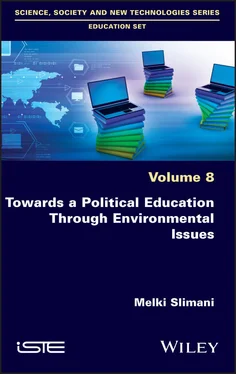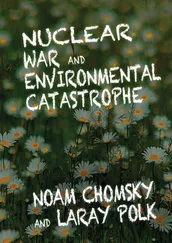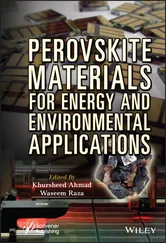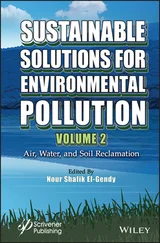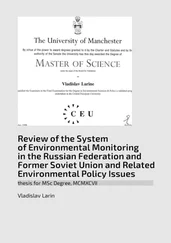2 Appendix 1: Interviews: Guides and Help ListsTable A1.1. Interview guide for teachers Table A1.2. Interview guide for learners (students) Table A1.3. Help list
3 Appendix 2: Report on Political Elements in the SDG 2030 Agenda and in the Contents of “Education for 2030 SDGs”Table A2.1. The political potential of EDIs in 2030 SDGs Table A2.2. The political potential of EDIs in “Education for 2030 SDGs” Table A2.3. Political learning and socialization in “Education for 2030 SDGs”
4 Appendix 3: Report on political elements in the Tunisian CurriculumTable A3.1. Collected EDIs in secondary education requirements Table A3.2. Curriculum elements produced in secondary level education: direct ob...Table A3.3. Interviews: characterization Table A3.4. Interviews: summaries Table A3.5. Interviews: help lists Table A3.6. Collected EDIs in 2009 higher education curricula Table A3.7. Collected EDIs in the 2015 higher education curricula (restructured ...Table A3.8. Elements of the produced curriculum of the environmental protection ...Table A3.9. Interviews: characterization Table A3.10. Interviews: summaries Table A3.11. Interviews: help lists
1 Cover
2 Table of Contents
3 Title Page Education Set coordinated by Angela Barthes and Anne-Laure Le Guern Volume 8
4 Copyright First published 2021 in Great Britain and the United States by ISTE Ltd and John Wiley & Sons, Inc. Apart from any fair dealing for the purposes of research or private study, or criticism or review, as permitted under the Copyright, Designs and Patents Act 1988, this publication may only be reproduced, stored or transmitted, in any form or by any means, with the prior permission in writing of the publishers, or in the case of reprographic reproduction in accordance with the terms and licenses issued by the CLA. Enquiries concerning reproduction outside these terms should be sent to the publishers at the undermentioned address: ISTE Ltd 27-37 St George’s Road London SW19 4EU UK www.iste.co.uk John Wiley & Sons, Inc. 111 River Street Hoboken, NJ 07030 USA www.wiley.com © ISTE Ltd 2021 The rights of Melki Slimani to be identified as the author of this work have been asserted by him in accordance with the Copyright, Designs and Patents Act 1988. Library of Congress Control Number: 2020951823 British Library Cataloguing-in-Publication Data A CIP record for this book is available from the British Library ISBN 978-1-78630-588-6
5 Foreword: Laying Down the Principles of Intentional Political Curricula for the Anthropocene World
6 Introduction
7 Begin Reading
8 Conclusion
9 Appendices
10 Appendix 1: Interviews: Guides and Help Lists
11 Appendix 2: Report on Political Elements in the SDG 2030 Agenda and in the Contents of “Education for 2030 SDGs”
12 Appendix 3: Report on political elements in the Tunisian Curriculum
13 Glossary
14 References
15 Index
16 End User License Agreement
1 v
2 iii
3 iv
4 ix
5 x
6 xi
7 xiii
8 xiv
9 xv
10 xvi
11 xvii
12 xviii
13 xix
14 1
15 2
16 3
17 4
18 5
19 6
20 7
21 8
22 9
23 10
24 11
25 12
26 13
27 14
28 15
29 16
30 17
31 19
32 20
33 21
34 22
35 23
36 24
37 25
38 26
39 27
40 28
41 29
42 30
43 31
44 32
45 33
46 34
47 35
48 36
49 37
50 39
51 40
52 41
53 42
54 43
55 44
56 45
57 46
58 47
59 48
60 49
61 50
62 51
63 52
64 53
65 54
66 55
67 56
68 57
69 59
70 60
71 61
72 62
73 63
74 64
75 65
76 66
77 67
78 68
79 69
80 70
81 71
82 72
83 73
84 74
85 75
86 76
87 77
88 78
89 79
90 80
91 81
92 82
93 83
94 84
95 85
96 86
97 87
98 88
99 89
100 90
101 91
102 93
103 94
104 95
105 96
106 97
107 98
108 99
109 100
110 101
111 102
112 103
113 104
114 105
115 106
116 107
117 108
118 109
119 110
120 111
121 112
122 113
123 114
124 115
125 117
126 118
127 119
128 120
129 121
130 122
131 123
132 124
133 125
134 126
135 127
136 128
137 129
138 131
139 132
140 133
141 134
142 135
143 136
144 137
145 138
146 139
147 140
148 141
149 142
150 143
151 144
152 145
153 147
154 148
155 149
156 150
157 151
158 152
159 153
160 154
161 155
162 156
163 157
164 158
165 159
166 160
167 161
168 162
169 163
170 164
171 165
172 166
173 167
174 168
175 169
176 170
177 171
178 172
179 173
180 174
181 175
182 176
183 177
184 178
185 179
186 180
187 181
188 183
189 184
190 185
191 186
192 187
193 188
194 189
195 190
196 191
197 192
198 193
199 194
200 195
201 196
202 197
203 198
204 199
205 200
206 201
207 203
208 204
209 205
Education Set
coordinated by
Angela Barthes and Anne-Laure Le Guern
Volume 8
Towards a Political Education Through Environmental Issues
Melki Slimani

First published 2021 in Great Britain and the United States by ISTE Ltd and John Wiley & Sons, Inc.
Apart from any fair dealing for the purposes of research or private study, or criticism or review, as permitted under the Copyright, Designs and Patents Act 1988, this publication may only be reproduced, stored or transmitted, in any form or by any means, with the prior permission in writing of the publishers, or in the case of reprographic reproduction in accordance with the terms and licenses issued by the CLA. Enquiries concerning reproduction outside these terms should be sent to the publishers at the undermentioned address:
ISTE Ltd
27-37 St George’s Road
London SW19 4EU
UK
www.iste.co.uk
John Wiley & Sons, Inc.
111 River Street
Hoboken, NJ 07030
USA
www.wiley.com
© ISTE Ltd 2021
The rights of Melki Slimani to be identified as the author of this work have been asserted by him in accordance with the Copyright, Designs and Patents Act 1988.
Library of Congress Control Number: 2020951823
British Library Cataloguing-in-Publication Data
A CIP record for this book is available from the British Library
ISBN 978-1-78630-588-6
Foreword
Laying Down the Principles of Intentional Political Curricula for the Anthropocene World
Proposed in the early 2000s to researchers in the life sciences and geosciences by the geochemist Paul Crutzen, the notion of the Anthropocene seeks to emphasize the idea of anthropogenic changes, which affect all the outer layers of the planet (gases, liquids and solids) and profoundly modify its biogeophysical dynamics. Climate and biodiversity issues would be good examples of this. Such modifications would come to characterize this new geological era and thus replace the previous one, the Holocene. From a natural sciences perspective, the matter would prove controversial and be discussed within the International Commission on Stratigraphy. Nonetheless, it has paved the way for a new account of the interface between the social history of humans and the natural history of the planet (Beau and Larrère 2018).
Читать дальше
